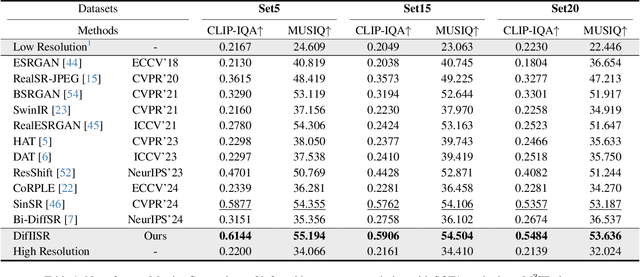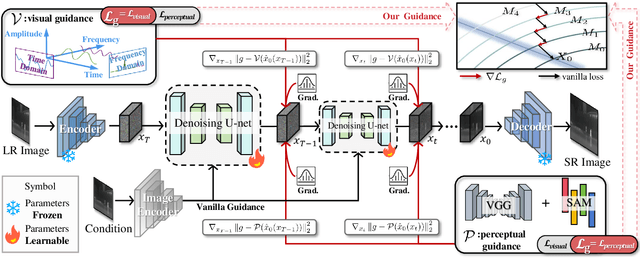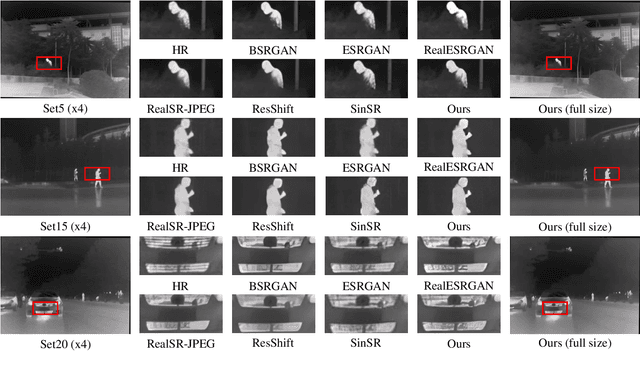Zirui Wang
Towards Adaptable Humanoid Control via Adaptive Motion Tracking
Oct 16, 2025Abstract:Humanoid robots are envisioned to adapt demonstrated motions to diverse real-world conditions while accurately preserving motion patterns. Existing motion prior approaches enable well adaptability with a few motions but often sacrifice imitation accuracy, whereas motion-tracking methods achieve accurate imitation yet require many training motions and a test-time target motion to adapt. To combine their strengths, we introduce AdaMimic, a novel motion tracking algorithm that enables adaptable humanoid control from a single reference motion. To reduce data dependence while ensuring adaptability, our method first creates an augmented dataset by sparsifying the single reference motion into keyframes and applying light editing with minimal physical assumptions. A policy is then initialized by tracking these sparse keyframes to generate dense intermediate motions, and adapters are subsequently trained to adjust tracking speed and refine low-level actions based on the adjustment, enabling flexible time warping that further improves imitation accuracy and adaptability. We validate these significant improvements in our approach in both simulation and the real-world Unitree G1 humanoid robot in multiple tasks across a wide range of adaptation conditions. Videos and code are available at https://taohuang13.github.io/adamimic.github.io/.
COMPASS: A Multi-Turn Benchmark for Tool-Mediated Planning & Preference Optimization
Oct 08, 2025Abstract:Real-world large language model (LLM) agents must master strategic tool use and user preference optimization through multi-turn interactions to assist users with complex planning tasks. We introduce COMPASS (Constrained Optimization through Multi-turn Planning and Strategic Solutions), a benchmark that evaluates agents on realistic travel-planning scenarios. We cast travel planning as a constrained preference optimization problem, where agents must satisfy hard constraints while simultaneously optimizing soft user preferences. To support this, we build a realistic travel database covering transportation, accommodation, and ticketing for 20 U.S. National Parks, along with a comprehensive tool ecosystem that mirrors commercial booking platforms. Evaluating state-of-the-art models, we uncover two critical gaps: (i) an acceptable-optimal gap, where agents reliably meet constraints but fail to optimize preferences, and (ii) a plan-coordination gap, where performance collapses on multi-service (flight and hotel) coordination tasks, especially for open-source models. By grounding reasoning and planning in a practical, user-facing domain, COMPASS provides a benchmark that directly measures an agent's ability to optimize user preferences in realistic tasks, bridging theoretical advances with real-world impact.
MANZANO: A Simple and Scalable Unified Multimodal Model with a Hybrid Vision Tokenizer
Sep 19, 2025Abstract:Unified multimodal Large Language Models (LLMs) that can both understand and generate visual content hold immense potential. However, existing open-source models often suffer from a performance trade-off between these capabilities. We present Manzano, a simple and scalable unified framework that substantially reduces this tension by coupling a hybrid image tokenizer with a well-curated training recipe. A single shared vision encoder feeds two lightweight adapters that produce continuous embeddings for image-to-text understanding and discrete tokens for text-to-image generation within a common semantic space. A unified autoregressive LLM predicts high-level semantics in the form of text and image tokens, with an auxiliary diffusion decoder subsequently translating the image tokens into pixels. The architecture, together with a unified training recipe over understanding and generation data, enables scalable joint learning of both capabilities. Manzano achieves state-of-the-art results among unified models, and is competitive with specialist models, particularly on text-rich evaluation. Our studies show minimal task conflicts and consistent gains from scaling model size, validating our design choice of a hybrid tokenizer.
YOLO-Count: Differentiable Object Counting for Text-to-Image Generation
Aug 01, 2025Abstract:We propose YOLO-Count, a differentiable open-vocabulary object counting model that tackles both general counting challenges and enables precise quantity control for text-to-image (T2I) generation. A core contribution is the 'cardinality' map, a novel regression target that accounts for variations in object size and spatial distribution. Leveraging representation alignment and a hybrid strong-weak supervision scheme, YOLO-Count bridges the gap between open-vocabulary counting and T2I generation control. Its fully differentiable architecture facilitates gradient-based optimization, enabling accurate object count estimation and fine-grained guidance for generative models. Extensive experiments demonstrate that YOLO-Count achieves state-of-the-art counting accuracy while providing robust and effective quantity control for T2I systems.
UniTracker: Learning Universal Whole-Body Motion Tracker for Humanoid Robots
Jul 10, 2025Abstract:Humanoid robots must achieve diverse, robust, and generalizable whole-body control to operate effectively in complex, human-centric environments. However, existing methods, particularly those based on teacher-student frameworks often suffer from a loss of motion diversity during policy distillation and exhibit limited generalization to unseen behaviors. In this work, we present UniTracker, a simplified yet powerful framework that integrates a Conditional Variational Autoencoder (CVAE) into the student policy to explicitly model the latent diversity of human motion. By leveraging a learned CVAE prior, our method enables the student to retain expressive motion characteristics while improving robustness and adaptability under partial observations. The result is a single policy capable of tracking a wide spectrum of whole-body motions with high fidelity and stability. Comprehensive experiments in both simulation and real-world deployments demonstrate that UniTracker significantly outperforms MLP-based DAgger baselines in motion quality, generalization to unseen references, and deployment robustness, offering a practical and scalable solution for expressive humanoid control.
Active View Selector: Fast and Accurate Active View Selection with Cross Reference Image Quality Assessment
Jun 24, 2025Abstract:We tackle active view selection in novel view synthesis and 3D reconstruction. Existing methods like FisheRF and ActiveNeRF select the next best view by minimizing uncertainty or maximizing information gain in 3D, but they require specialized designs for different 3D representations and involve complex modelling in 3D space. Instead, we reframe this as a 2D image quality assessment (IQA) task, selecting views where current renderings have the lowest quality. Since ground-truth images for candidate views are unavailable, full-reference metrics like PSNR and SSIM are inapplicable, while no-reference metrics, such as MUSIQ and MANIQA, lack the essential multi-view context. Inspired by a recent cross-referencing quality framework CrossScore, we train a model to predict SSIM within a multi-view setup and use it to guide view selection. Our cross-reference IQA framework achieves substantial quantitative and qualitative improvements across standard benchmarks, while being agnostic to 3D representations, and runs 14-33 times faster than previous methods.
Seeing in the Dark: Benchmarking Egocentric 3D Vision with the Oxford Day-and-Night Dataset
Jun 04, 2025Abstract:We introduce Oxford Day-and-Night, a large-scale, egocentric dataset for novel view synthesis (NVS) and visual relocalisation under challenging lighting conditions. Existing datasets often lack crucial combinations of features such as ground-truth 3D geometry, wide-ranging lighting variation, and full 6DoF motion. Oxford Day-and-Night addresses these gaps by leveraging Meta ARIA glasses to capture egocentric video and applying multi-session SLAM to estimate camera poses, reconstruct 3D point clouds, and align sequences captured under varying lighting conditions, including both day and night. The dataset spans over 30 $\mathrm{km}$ of recorded trajectories and covers an area of 40,000 $\mathrm{m}^2$, offering a rich foundation for egocentric 3D vision research. It supports two core benchmarks, NVS and relocalisation, providing a unique platform for evaluating models in realistic and diverse environments.
VEAttack: Downstream-agnostic Vision Encoder Attack against Large Vision Language Models
May 23, 2025Abstract:Large Vision-Language Models (LVLMs) have demonstrated remarkable capabilities in multimodal understanding and generation, yet their vulnerability to adversarial attacks raises significant robustness concerns. While existing effective attacks always focus on task-specific white-box settings, these approaches are limited in the context of LVLMs, which are designed for diverse downstream tasks and require expensive full-model gradient computations. Motivated by the pivotal role and wide adoption of the vision encoder in LVLMs, we propose a simple yet effective Vision Encoder Attack (VEAttack), which targets the vision encoder of LVLMs only. Specifically, we propose to generate adversarial examples by minimizing the cosine similarity between the clean and perturbed visual features, without accessing the following large language models, task information, and labels. It significantly reduces the computational overhead while eliminating the task and label dependence of traditional white-box attacks in LVLMs. To make this simple attack effective, we propose to perturb images by optimizing image tokens instead of the classification token. We provide both empirical and theoretical evidence that VEAttack can easily generalize to various tasks. VEAttack has achieved a performance degradation of 94.5% on image caption task and 75.7% on visual question answering task. We also reveal some key observations to provide insights into LVLM attack/defense: 1) hidden layer variations of LLM, 2) token attention differential, 3) M\"obius band in transfer attack, 4) low sensitivity to attack steps. The code is available at https://github.com/hfmei/VEAttack-LVLM
DeepMath-Creative: A Benchmark for Evaluating Mathematical Creativity of Large Language Models
May 13, 2025

Abstract:To advance the mathematical proficiency of large language models (LLMs), the DeepMath team has launched an open-source initiative aimed at developing an open mathematical LLM and systematically evaluating its mathematical creativity. This paper represents the initial contribution of this initiative. While recent developments in mathematical LLMs have predominantly emphasized reasoning skills, as evidenced by benchmarks on elementary to undergraduate-level mathematical tasks, the creative capabilities of these models have received comparatively little attention, and evaluation datasets remain scarce. To address this gap, we propose an evaluation criteria for mathematical creativity and introduce DeepMath-Creative, a novel, high-quality benchmark comprising constructive problems across algebra, geometry, analysis, and other domains. We conduct a systematic evaluation of mainstream LLMs' creative problem-solving abilities using this dataset. Experimental results show that even under lenient scoring criteria -- emphasizing core solution components and disregarding minor inaccuracies, such as small logical gaps, incomplete justifications, or redundant explanations -- the best-performing model, O3 Mini, achieves merely 70% accuracy, primarily on basic undergraduate-level constructive tasks. Performance declines sharply on more complex problems, with models failing to provide substantive strategies for open problems. These findings suggest that, although current LLMs display a degree of constructive proficiency on familiar and lower-difficulty problems, such performance is likely attributable to the recombination of memorized patterns rather than authentic creative insight or novel synthesis.
DifIISR: A Diffusion Model with Gradient Guidance for Infrared Image Super-Resolution
Mar 03, 2025



Abstract:Infrared imaging is essential for autonomous driving and robotic operations as a supportive modality due to its reliable performance in challenging environments. Despite its popularity, the limitations of infrared cameras, such as low spatial resolution and complex degradations, consistently challenge imaging quality and subsequent visual tasks. Hence, infrared image super-resolution (IISR) has been developed to address this challenge. While recent developments in diffusion models have greatly advanced this field, current methods to solve it either ignore the unique modal characteristics of infrared imaging or overlook the machine perception requirements. To bridge these gaps, we propose DifIISR, an infrared image super-resolution diffusion model optimized for visual quality and perceptual performance. Our approach achieves task-based guidance for diffusion by injecting gradients derived from visual and perceptual priors into the noise during the reverse process. Specifically, we introduce an infrared thermal spectrum distribution regulation to preserve visual fidelity, ensuring that the reconstructed infrared images closely align with high-resolution images by matching their frequency components. Subsequently, we incorporate various visual foundational models as the perceptual guidance for downstream visual tasks, infusing generalizable perceptual features beneficial for detection and segmentation. As a result, our approach gains superior visual results while attaining State-Of-The-Art downstream task performance. Code is available at https://github.com/zirui0625/DifIISR
 Add to Chrome
Add to Chrome Add to Firefox
Add to Firefox Add to Edge
Add to Edge